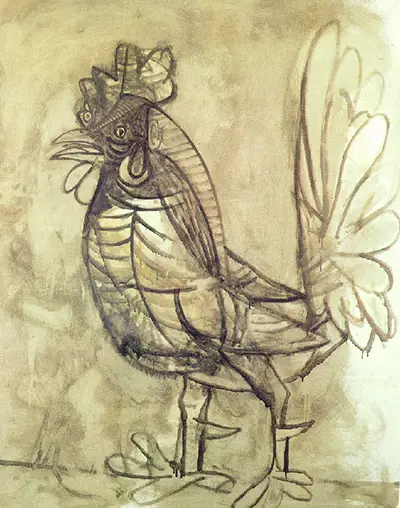One of Europe’s best artists of the 20th century, Pablo Picasso had a collection of animal painting which frankly is the most famous work of his collection.
Nonetheless, a maestro of art, Picasso showed his true genius through applying his minimalist approach through different mediums and one of the most outstanding animal pieces to give him his recognition of one of the best it the 'rooster' painting he finished in 1938.
In 1938, during the Neoclassicist and Surrealist Period, Picasso introduced a unique colorful imagery of a cockerel into his work. A maestro in using the Naïve Art (Primitivism) style in creating his masterpieces, Pablo presents a rooster that explores the bird's movements and facial contortions.
The unique nature of this image is the differentiation of cubism as well as expressionism that he had not highlighted in any other animal painting before. The frame of the rooster is drawn by scribbling, this is not the single line style employed by Picasso in other animal portraits. From this point, he uses cubism to highlight different patterns that bring more depth to the imagery.
This is more apparent on the head of the rooster. From this point, Picasso introduces expressionism using single line shades but in a colorful manner. The fact is there is a bit of realism in the painting the shades of red and brown are realistic nonetheless, the shades of blue and green are more parrot than rooster like.
This then brings in a unique perspective of this particular painting. When asked about this particular painting Picasso stated 'there have always been roosters, but like everything else in life we must discover them - roosters have always been seen but never as well as in American weather vanes.
This was a symbol of American valor into the first world war thus the color. Looking at 'Le Coq' it can be suggested that it's the dawn and a new era thus the posture. This is not just a rooster painting but also an expression by Picasso of a new dawn brought by the Americans.


